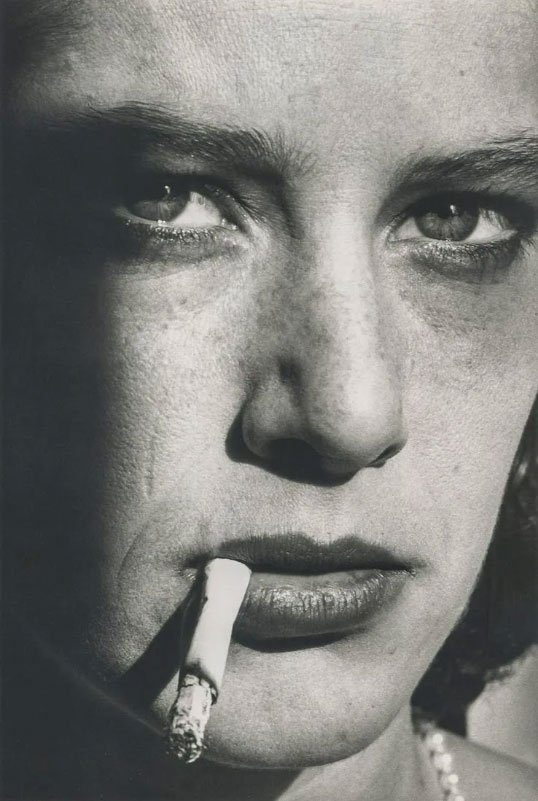Helmut Newton’s Photography
Helmut Newton’s photography sparked controversy both during and after his career, the discussions often concerned with whether Newton promoted the male gaze or created space for female liberation – a conservation still largely debated. Jewish-German from Berlin, Helmut was just entering his teenage years when the Nazi regime rose to power in Germany. The influence of the “ideal Aryan” impacted Newton deeply as a young boy. This influence later manifests in his photographic work in which most of the women photographed possess the features associated with the Aryan race.
Debra Winger by Helmut Newton, Los Angeles 1983
This exhibition at the Helmut Newton Foundation in Berlin presents an array of photographs shot by Newton and various photographers such as Ruth Harriet Louise, George Hoyningen-Huene, Steve Schapiro, Eve Arnold, Inge Morath, Larry Sultan, and Anton Corbijn. As seen in the exhibition, Helmut Newton’s portraiture of movie stars in the 80s visually draws from the aesthetics used in Old Hollywood films. As we step into the 90s, we can see that he is experimented with more colour in his works for Vogue, and started to photograph his subjects in the nude for a lot of the editorial work with Playboy.
Elizabeth Hurley, American Vogue by Helmut Newton, Hollywood 1997
As much perceived glamour as there is in Hollywood, anyone who has visited Los Angeles can see that there is a darker side to it. Not everyone who has the aspirations of being a star can “make it” and, like any city, there are people who are swimming in abundance alongside those who are struggling from day to day. This can be seen in the back room of the exhibition which includes works from Alice Springs, also known as June Newton, and various other photographers. The focus of this section is the city of Los Angeles and contains mostly street photography.
Self-Portrait, Rue Aubriot, Paris, 1972 by June Newton, known professionally as Alice Springs. June Newton was often both a model and a collaborator for her husband, Helmut Newton.
Helmut’s wife, June Newton, was involved in the entire production of every shoot, it was even said by spectators that she was more in charge than he was. Many critics claim that some of the photographs cross the line with displays of violence. This begs the question of how far is too far? Art is ultimately about expression, and criticism is a natural process which Helmut thoroughly loved. The line between misogyny and empowerment is ultimately for the viewer to draw.
-
3 September - 20 November 2022
Helmut Newton Foundation


